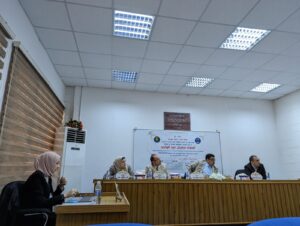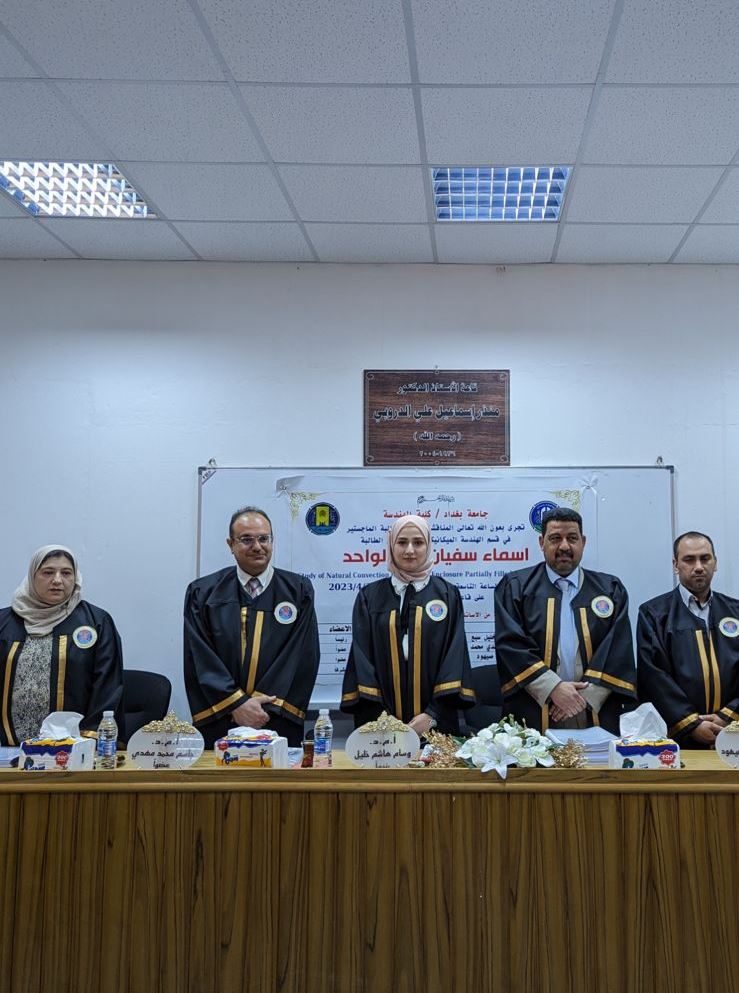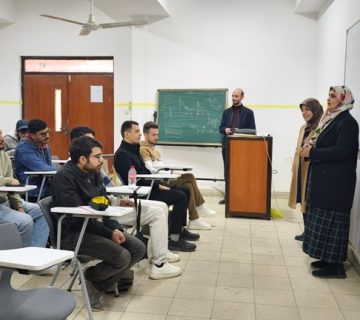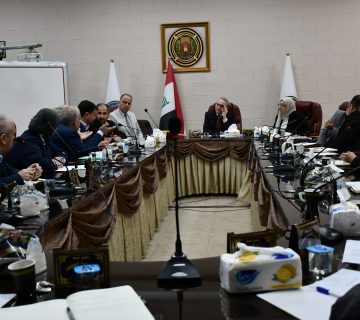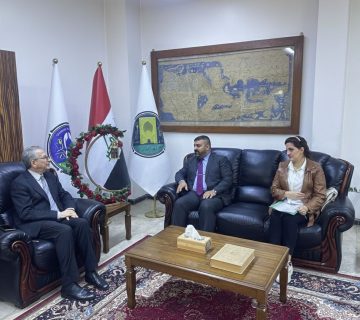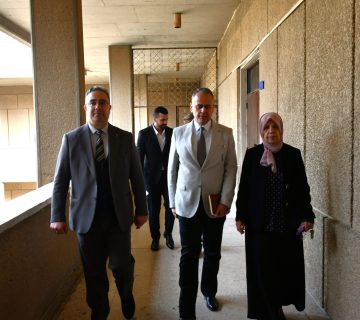It was conducted on Sunday, 30/4/2023, in hall of Dr. Munther Al-Droubi the discussion of the master’s thesis of the student Assma Sufyan AbdulWahed, which is tagged:
“Study of Natural Convection in Cubic Enclosure Partially Filled with Porous Media”.
The discussion committee consisted of names listed below:
Asst. Prof. Dr. Wissam Hashim Khalil – University of Anbar / Renewable Energy Research Center – Chairman.
Asst.Prof. Dr. Jasim Mohammed Mahdi – University of Baghdad/College of Engineering/ Department of Energy Engineering – Member.
Lec. Dr. Raed Gatea Saihood – University of Baghdad / College of Engineering / Department of Mechanical Engineering – Member.
Asst.Prof. Dr. Luma Fadhil Ali – University of Baghdad/ College of Engineering/ Department of Mechanical Engineering – Supervisor.
The thesis was summarized as follows:
The numerical and experimental simulation of two-dimensional buoyancy driven flow and heat transfer inside a square enclosure partially occupied by porous material and governed by symmetric side cooling and uniform heat flux bottom heating was performed. The study implies the utilization of the metallic coppers foams to enhance the heat transfer inside the closed enclosure. The numerical approach was emulated by using the three conservation laws and for the porous domain, Brinkman-Extended Darcy laws for the momentum equation. The Finite Element Method was exploited to extract the flow field solution using commercial software (COMSOL Multiphysics5.5a®). The four distinct parameters tested are the copper foam layer width (one layer 0.2 m), (one layer of 0.1 m), and (three layers of 0.03 m), the copper foam height (0.01, 0.05, 0.1, 0.15) m, the constant heat flux (200, 400, 600, 800) W/m2, and the heater length (0.2 and 0.1) m. The affiliated results were displayed as streamlines, isothermal lines, temperature distributions, and local and mean Nusselt numbers. The test setup was constructed to investigate the impact of the buoyancy-affected flow and heat transfer in cubic enclosure partially superposed with horizontal sheets of the metallic foams. The parameters and boundary conditions adopted were that same as that of the numerical approach with an exception that only one thickness was used (Lp = 0.05L). The results were outlined as a temperature distribution and the Nusselt numbers. Based on the acquired results, attaching the metal foam layers had a positive influence on the heat transfer characteristics by boosting the natural convective phenomena. It was shown that the use of three metal foam layers of width (Wp= 0.03 m) resulted in best convection intensity where the maximum velocity magnitudes were (0.25 m/s). Increasing the Rayleigh number or in other words the uniform heat flux led to a growth in the local Nusselt numbers for both size of the heater. An enhancement of (85.3%) can be obtained for local (Nu) when (Lp = 0.05L) against (Lp = 0.75L) at (800 W/m2). Furthermore, the local (Nu) had the best impact in the three fins case. A growth of (99.6%) and (99.8%) in the local Nu at (Wp = 0.03 m) against using (Wp = 0.2 and Wp = 0.1 m) for (Lp = 0. 5L, q” = 400 W/m2, and ζ = 0.2 m). Moreover, the mean (Nu) for this metal foam arrangement was greater by (98%) and (91%) than (Wp = 0.2 m) and (Wp = 0.1 m) respectively. It was also deduced that the most elevated temperature was
accomplished through the use of the larger length for the heater. The highest
temperature marked within the metal foam block was (3 %) higher than when
the heater of half-length was employed for (Wp = 0.1 m). the experimental
findings showed that the best temperature distribution was at
(800 W/m2). An increase of (19.8%) and (36.9%) for (Wp = 0.1 m) over
(Wp= 0.2 m) and (Wp = 0.03 m) respectively when (ζ = 0.2 m). When
(ζ = 0.1 m) it rose by (23.5%) for (Wp = 0.1 m) over (Wp = 0.2 m).
Additionally, a (30.7 %) enhancement was observable when employing
(ζ = 0.2 m) over (ζ = 0.1m). Finally, among the other cases, the installation of
three fins was the most cost-effective because it generated the maximum heat
transfer rate with the least amount of material needed. This might be used in
future applications that demand less material, therefore competitive costs, and
high standards.
After scientific discussions by the discussion committee members on the contents of the thesis in-depth and expressing their observations, directives, and defense by the student, the thesis was accepted and the student was awarded the M.SC in Mechanical Engineering Sciences with a grade of excellent.
On this occasion, we cannot help but extend our thanks to the student, Assma Sufyan AbdulWahed, for his outstanding efforts throughout the study period, wishing him continued success. We also thank the supervisor and the discussion committee members, for their tireless and distinguished effort, in a way that befits the submission of the thesis in the best way and in accordance with the scientific level presented.


